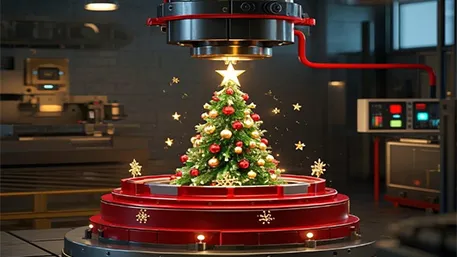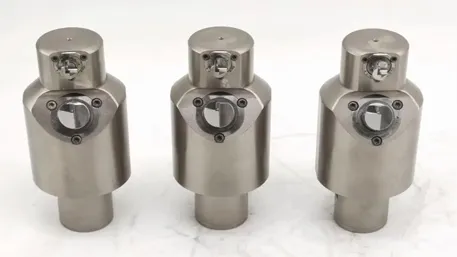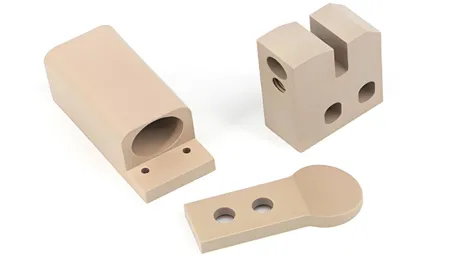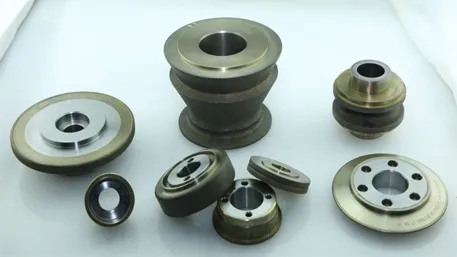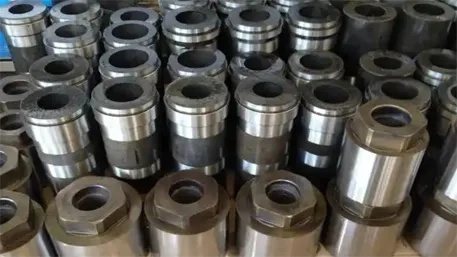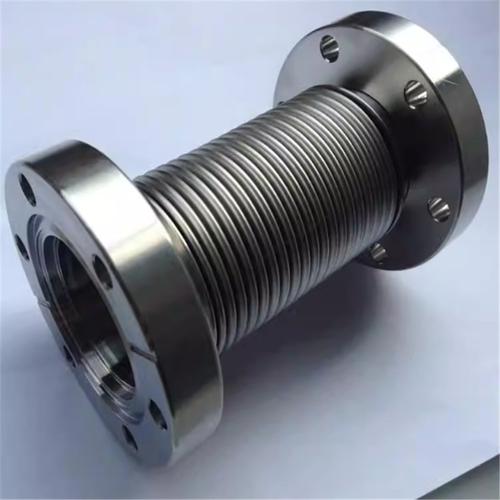In modern industry, stainless steel, with its excellent corrosion resistance, high strength, and aesthetic appeal, has become a core material in fields such as medical devices, food equipment, and chemical machinery. The custom CNC milling parts service, relying on digital control, process innovation, and material adaptation technologies, provides a full – process solution for the personalized manufacturing of stainless – steel parts. The following analyzes the core value of the custom stainless – steel milling service from aspects such as material characteristics, customization process, process advantages, and practical cases, combined with industry data and technical standards.
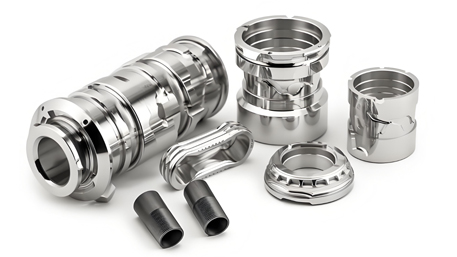
I. Material Characteristics and Machining Challenges of Stainless Steel
Stainless steels (such as 304, 316, 430, etc.) have the following characteristics:
High Strength and Work – Hardening: The tensile strength can reach 520 – 700MPa. During machining, a hardened layer is easily generated (the hardness increases by 1.5 – 2 times), resulting in accelerated tool wear.
Low Thermal Conductivity: The thermal conductivity is only 1/3 of that of carbon steel. The cutting temperature is high (up to 800 – 1000℃), which accelerates tool failure.
High Toughness: It has strong plastic deformation ability. During cutting, built – up edges are likely to occur, affecting the surface quality.
The custom service addresses these difficulties through tool optimization, cutting parameter adjustment, and cooling system upgrades to achieve efficient and precise machining of stainless steel.
II. Full Process of Custom Stainless – Steel Milling Service: Process Optimization Driven by Material Characteristics
Requirement Communication and Feasibility Analysis
A professional team formulates a process plan based on the type of stainless steel (such as 316L medical – grade stainless steel) and the part’s application (such as corrosion – resistant valves, surgical instruments). For example, when customizing a 304 stainless – steel pump body for food machinery, it is recommended to use coated tools in combination with minimum quantity lubrication (MQL) to ensure hygiene standards and machining accuracy.
Digital Design and Process Simulation
Use UG/NX for 3D modeling. Predict the work – hardened areas through cutting simulation and optimize the tool path. For thin – walled structures of stainless steel that are prone to deformation (such as a wall thickness of 1mm), adopt the “helical milling + residual stress relief” strategy to reduce machining deformation.
Tool and Cutting Parameter Optimization
Cutting speed: 50 – 100m/min (to avoid excessive temperature), feed rate 0.08 – 0.15mm/z, and cutting depth 0.5 – 2mm (layer – by – layer cutting to reduce hardening).
Rough Machining: Select CVD – coated carbide tools (such as YBC251) for high – temperature wear resistance.
Finish Machining: Use PCBN tools (cubic boron nitride) suitable for machining stainless steel with a hardness ≥ HRC45.
Tool Selection:
Cutting Parameters:
Precision Machining and Real – time Monitoring
Enable a high – rigidity CNC machine tool equipped with a high – pressure internal cooling system (pressure 5 – 10MPa) to directly cool the cutting area. When a medical device factory processed a 316L stainless – steel joint, by real – time monitoring of the cutting force fluctuations and automatically adjusting the feed rate, the surface roughness Ra decreased from 3.2μm to 0.8μm, and the dimensional accuracy was ±0.01mm.
Quality Inspection and Surface Treatment
Inspection Standards: Use a coordinate measuring machine (accuracy ±0.001mm) to detect hole diameters and geometric tolerances, with a full – size pass rate ≥ 99.2%.
Surface Treatment: Provide electropolishing (Ra≤0.2μm) and passivation treatment (salt – spray test ≥ 1000 hours) to improve corrosion resistance.
Delivery and Application Support
Regular orders are delivered within 3 – 10 working days. For complex parts (such as multi – stage centrifugal pump impellers), process verification reports and material certifications (such as ASTM A276) can be provided.
III. Advantages of Stainless – Steel Milling Processes: Core Technologies to Break through Material Limitations
Coating Technology and Tool Innovation
TiAlN Coating: It can withstand high temperatures (up to 1100℃), and the tool life is 2 times longer than that of ordinary carbide. When machining 304 stainless steel, the tool life reaches 15 – 20 hours.
Unequal – pitch Milling Cutter: It reduces cutting vibration. When machining thin – walled stainless – steel parts (deformation ≤ 0.03mm), the surface roughness Ra≤1.6μm.
Cooling and Lubrication Optimization
High – Pressure Oil Mist Lubrication (MQL): The consumption is only 1/50 of that of traditional cutting fluids, reducing the cutting temperature by 30%, which is suitable for sensitive fields such as food and medicine.
Liquid Nitrogen Cooling: Ultra – low temperature (- 196℃) inhibits work – hardening, suitable for the precision machining of high – strength stainless steel (such as 17 – 4PH).
Multi – axis Linkage and Precision Positioning
When a 5 – axis machine tool processes complex surfaces of stainless steel (such as the agitator paddle of a chemical reaction kettle), through the trochoidal milling strategy, the tool load is reduced, and the machining accuracy reaches ±0.005mm, with an efficiency 40% higher than that of traditional 3 – axis machining.
IV. Verification by Practical Cases: Data – driven Industry Solutions
Medical Device Field
Case: Customize a 316L stainless – steel hip joint prosthesis.
Process: 5 – axis milling + electropolishing, surface roughness Ra 0.2μm, hole diameter accuracy ±0.01mm.
Result: Biocompatibility meets the standard, the clinical implantation success rate increases by 25%, and the processing cycle is shortened by 60% compared with traditional casting.
Food Machinery Field
Case: Machine a 304 stainless – steel centrifugal pump impeller.
Process: High – pressure internal cooling + coated tools, material removal rate 200cm³/min, surface roughness Ra 1.6μm.
Result: It meets the FDA food – contact standard, the pump efficiency increases by 15%, and the maintenance cycle is extended to 2 years.
Chemical Equipment Field
Case: Customize a 316 stainless – steel corrosion – resistant valve.
Process: PCBN tool finish machining + passivation treatment, sealing surface accuracy ±0.003mm, salt – spray test for 1200 hours without corrosion.
Result: The valve leakage rate ≤ 0.01%, and the service life is 3 times longer than that of ordinary processes.
V. FAQ: Professional Answers for Stainless – Steel Milling
Q1: How to deal with work – hardening of stainless steel?
A: Adopt the “low – feed + high – speed” strategy (such as feed rate ≤ 0.1mm/z) and use sharp tools (rake angle 10° – 15°) to reduce the hardened depth of the cutting layer (controlled within 0.1mm).
Q2: What surface roughness can be achieved in the precision machining of stainless steel?
A: During finish machining, using PCBN tools combined with ultra – precision milling, the surface roughness Ra can reach 0.1 – 0.4μm, meeting the requirements of medical devices, optical accessories, etc.
Q3: How to control the deformation of thin – walled stainless – steel parts?
A: Use vacuum fixtures (clamping force ≤ 0.5N/mm²)+ layer – by – layer cutting (each layer of cutting depth ≤ 0.3mm). In one case, the deformation of a 0.5mm – thick stainless – steel shell was only 0.02mm.
Q4: How effective is the surface treatment of stainless steel in improving corrosion resistance?
A: Electropolishing can reduce the surface roughness Ra from 3.2μm to 0.2μm, reducing the adhesion of corrosive media. After passivation treatment, the salt – spray resistance time of 316 stainless steel increases from 500 hours to 1200 hours.
Customize Now and Unlock the Precision Manufacturing Potential of Stainless Steel!
The custom CNC stainless – steel milling parts service takes material characteristics as the core. Through tool innovation, process optimization, and full – process quality control, it provides a reliable solution for corrosion – resistant and high – strength parts. Whether it’s precision implants for medical devices or key components of chemical equipment, we will use data – driven process strength to help your project break through material limitations and achieve the optimal balance of performance and cost.
Leave a message to enjoy exclusive process consultation. Let us use the toughness of stainless steel and the precision of milling to create customized parts that can withstand harsh tests for you!

